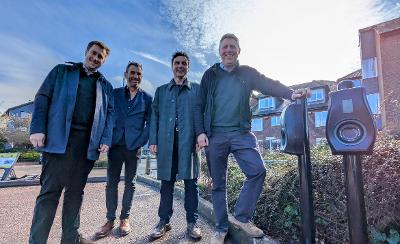Electric vehicle charging for tenants
We understand that our tenants may want to charge electric vehicles from home by installing a charge point at the property. Please read through the following guidance to understand what you need to do before you install any equipment.

Do I need permission to have an electric vehicle charger?
Yes, as the council is the property owner you will require our permission.
Permission is also required if you wish to claim for a contribution towards the cost of the installation through the Government Grant schemes for electric vehicle charging infrastructure.
Visit EV chargepoint grant for flat owner-occupiers and people living in rented properties: installer guidance to find out more.
You do not need planning permission to locate a charger for off street parking unless the property is a listed building or in a conservation area.
If you are unsure of whether you are in a conservation area, please visit our page.
Does my vehicle qualify for a grant?
Central government grants are only for vehicles on the List of OZEV-approved electric vehicles. Please visit this page to check your vehicle eligibility.
Do I have to have designated off-street parking?
Yes, permission will only be granted if you already have - or will install - a dropped kerb and hard standing.
What if I live in a flat?
You may be able to apply if you live in a flat, but you would need to meet previously stated criteria, such as owning a qualifying vehicle and having your own designated off-street parking space which meets location requirements.
Where should I locate the charger?
Your car charger needs to be as close to where you normally park your car as possible. The charger cannot face the highway or be within two metres of it. You'll need an electricity supply to whichever location you choose, with a dedicated connection on your home's consumer unit to provide enough power.
If the installer requires the consumer unit upgrading to accommodate the charging unit, you must contact the council for further advice.
Always check the length of cable that comes with the charger you're considering buying, and make sure it will reach the charging point on your car. You don't want to be pulling the cable taught or parking your car at an angle to get it to plug in.
Finally, consider where the cable will be while the car is charging. Try to avoid having it trailing across an area where you walk regularly as it will be a trip hazard, particularly at night.
Charging cables cannot be placed over public land, such as pavements, even temporarily.
Is there a size restriction for the charger?
Yes, the charger cannot be larger than 0.2 cubic metres which if it was a box, it would be 20cm x 20cm x 20cm.
Who can install the charger?
Your electric vehicle charging point must only be installed by a skilled person registered with a competent persons scheme and authorised by OZEV. Charge point installations must have an RCD built into the unit and be installed in accordance with:
- BS EN 61851-1:2019
- The current edition of the IET Wiring Regulations - currently BS 7671:2018+A1:2020
- The recommendations of the IET Code of Practice for Electric Vehicle Charging Equipment Installations (as amended)
- The Electricity Safety, Quality and Continuity Regulations.
The installation should consider the requirements of BS 8300:2009+A1:2010 and the requirements of disabled people.
The final installation shall be in accordance with the current edition of the Building Regulations Part P (Electrical Safety - Dwellings).
Equipment installed shall meet the applicable minimum IP ratings set out in BS EN 61851-1:2019 and BS 7671:2018 according to the usage location.
The electrical supply of the final installation should allow the charging equipment to operate at full rated capacity. Where local supply constraints prevent operation at full rated capacity, the charging equipment shall be classified according to actual output capacity.
The charge point installers must also notify the relevant Distribution Network Operator (DNO) directly of the installation of a charge point.
Full guidance for the electric vehicle connection process can be found on the Energy Networks Association (ENA) website. This is to minimise the chance of power quality issues to electricity customers.
What documentation do I need to provide the council on completion of work?
A copy of the Electrical Installation Certificate must be provided to the council on completion of works along with the make and model of the charger unit and a clear photo of the installed charging point.
What if I no longer want the charger?
In the event you want to remove the charger, the Government regulations compel you to remove the charging point "as soon as reasonably practicable" and reinstate the wall or patch of ground to its previous condition.
Next steps
If you would like to apply for permission, please complete the form on this page of our website - Altering your council home.
On receipt, we will carry out an initial assessment against the asset details for your home to check you meet the basic criteria and confirm if you don't. Where you do, we will send you a specific electric vehicles charging point application form.




